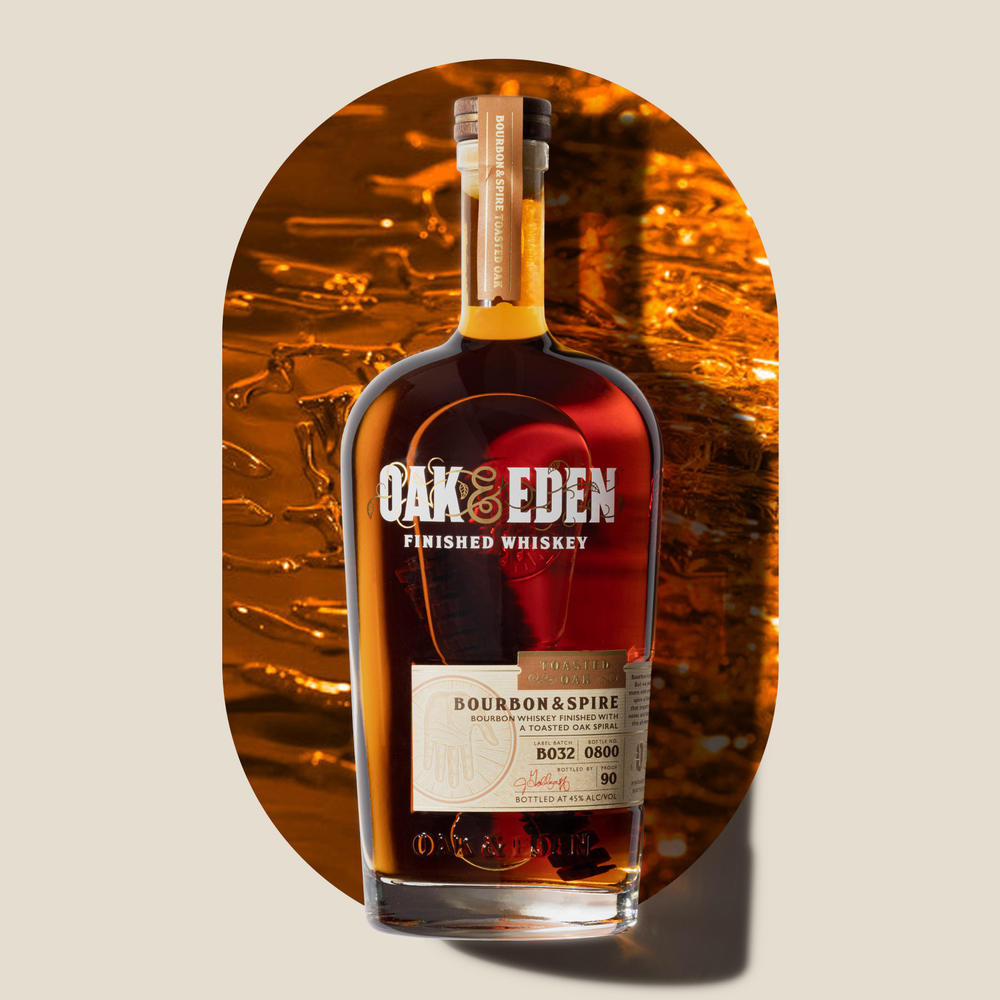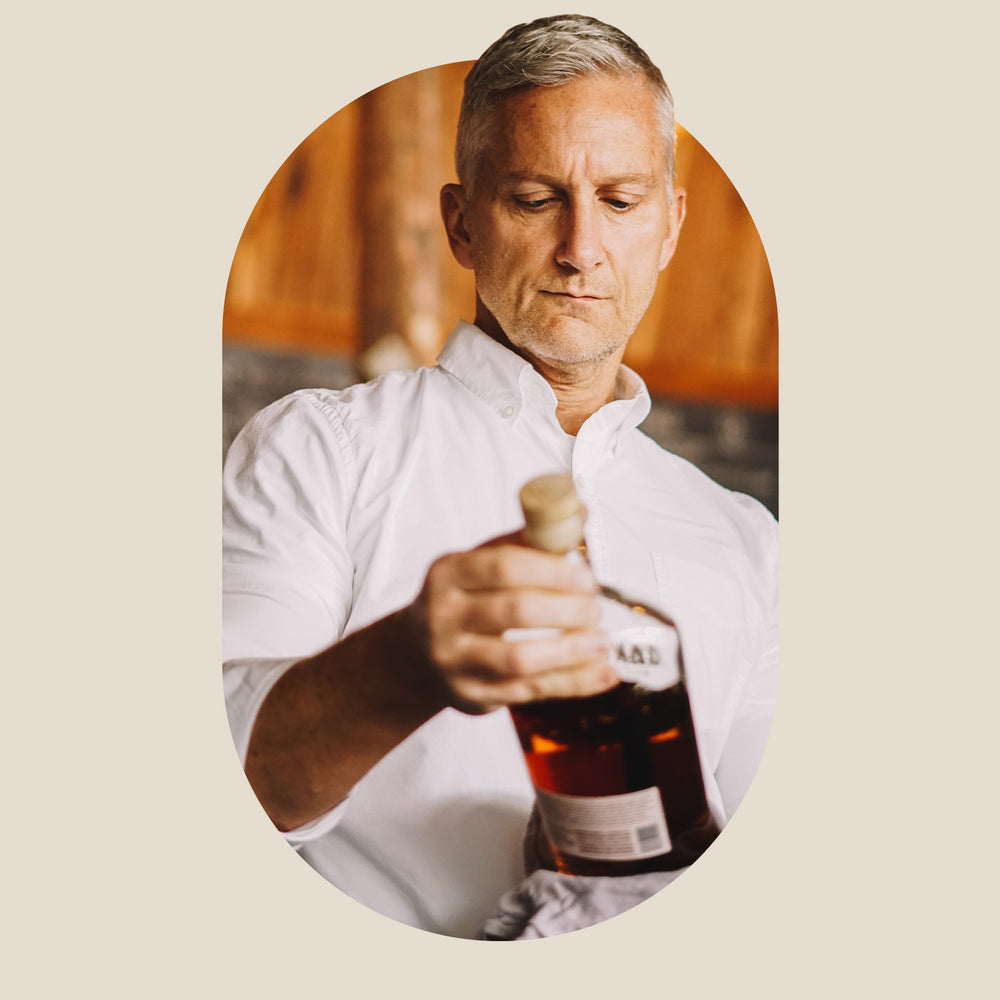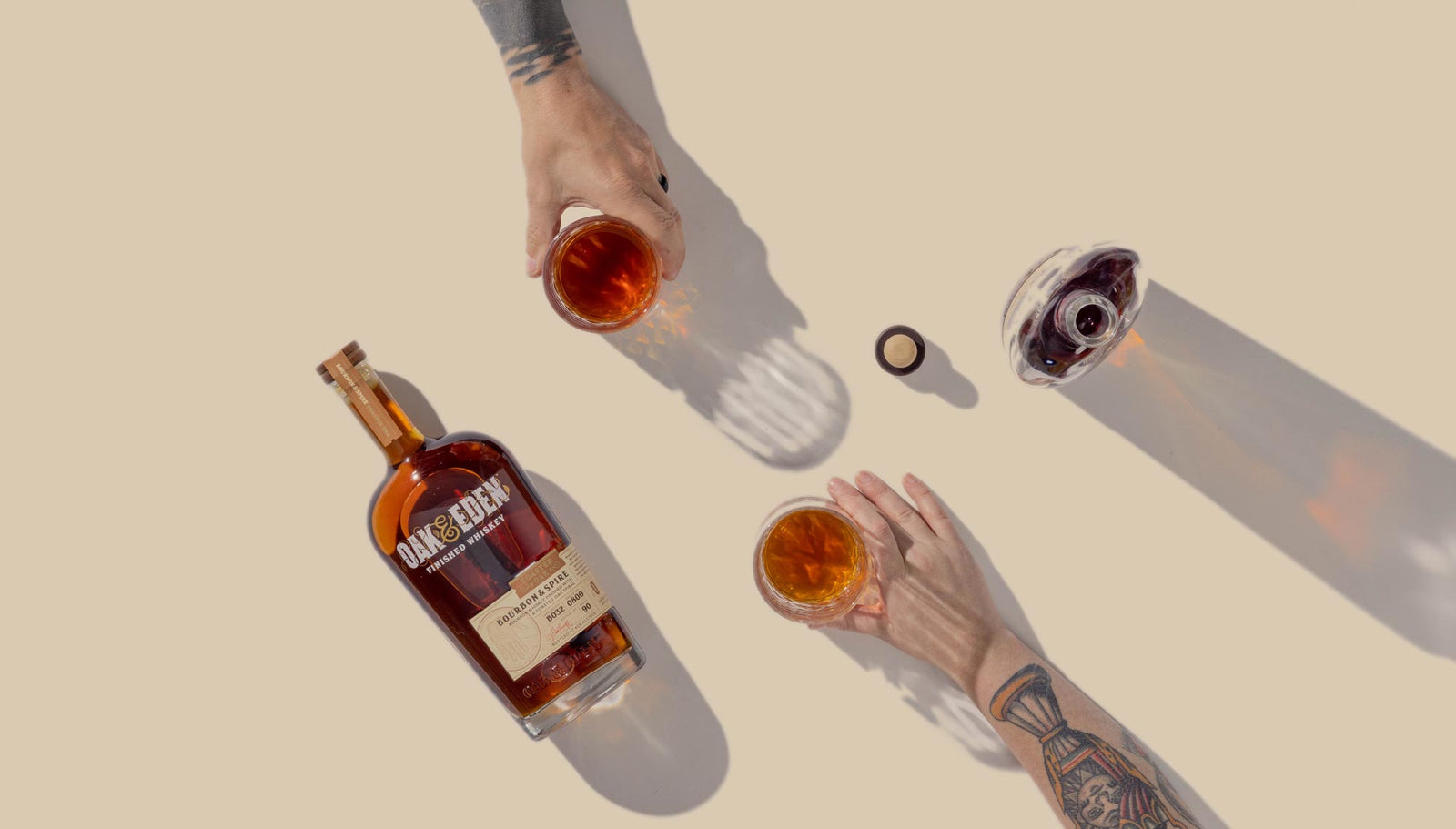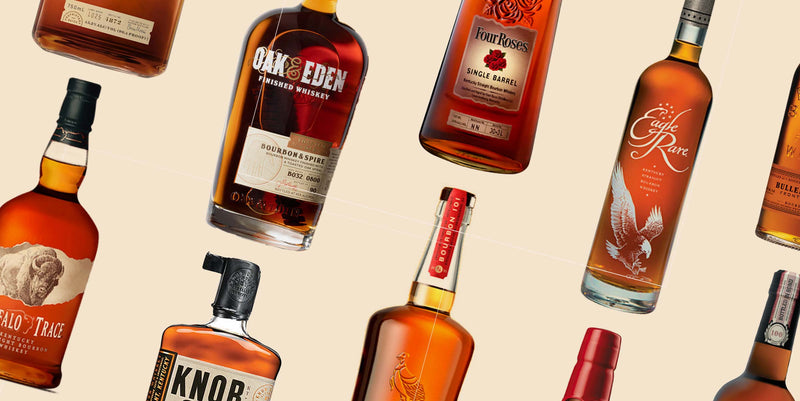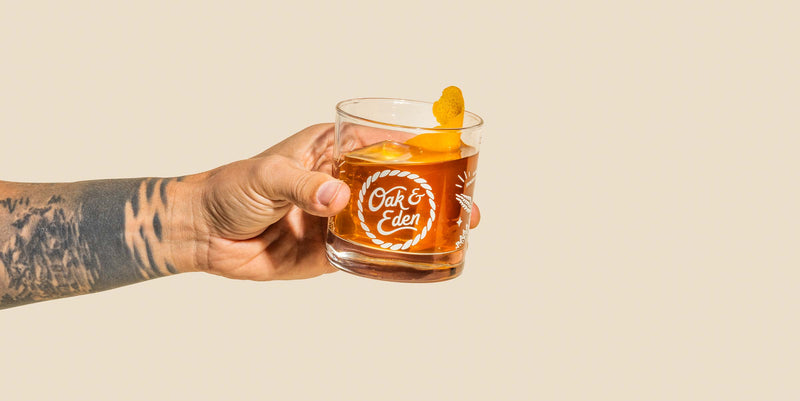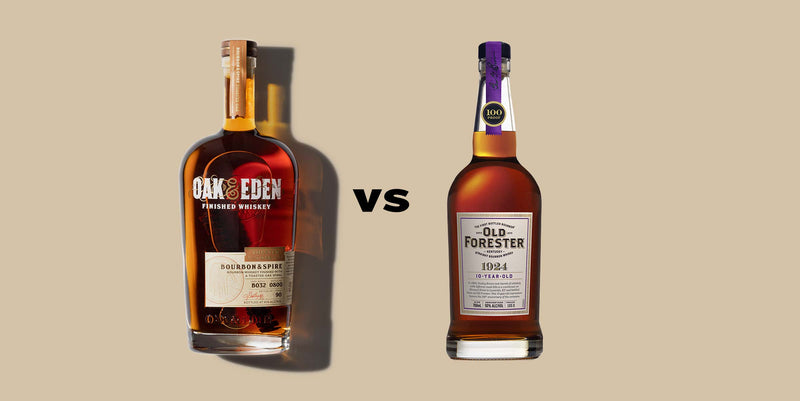Whiskey Vs. Bourbon: What To Know
Bourbon whiskey is the most famous type of whiskey in the United States of America. As the most famous spirit to come out of distilleries in the US, bourbon carries a heavyweight as the world's liquor ambassador of the United States.
But what makes bourbon special in comparison to Irish whiskey, Rye whiskey, Scotch whisky, Tennessee whiskey, and other varieties? Is bourbon a type of whiskey, or is it a special kind of spirit? What makes bourbon unique?
The differences between straight bourbon and whiskey can be confusing if you are new to the world of alcoholic beverages. To make whiskey as accessible as possible, we want to share our knowledge with you so that you can better understand whiskey.
Here is everything that you need to know about whiskey and bourbon.
What Is Whiskey?
Whiskey is one of the five basic standard types of hard liquor. Whiskey is a distilled spirit made from cereal grains, which is typically some combination of corn, rye, wheat, and barley.
Whiskey is hard liquor, so it is at least 40% alcohol by volume and can be up to 62.5% ABV in the highest-proof whiskey on the market.
Whiskey can be anywhere from a pale yellow to a deep brown color and is typically the darkest of the hard liquors. Whiskey is aged anywhere from a few months to years in wooden barrels. All the different factors that go into a whiskey, the mash bill, aging time, barrel type, etc., separate the different whiskey varieties.
What Is Bourbon?
Bourbon is a specific type of whiskey that gets its name from the county of Bourbon, Kentucky, where bourbon got its start. While not all bourbon has to be made in Kentucky, it does have to be made in the United States and to be called Kentucky bourbon, it must be made in the state.
Bourbon must also be made from fermented grain mash that is at least 51% corn. The rest of the mash bill is typically composed of some combination of wheat, barley, or rye. Bourbon has been an American staple since it was first officially labeled as bourbon in 1840.
How Is Bourbon Made?
Bourbon and whiskey are made in the same way; or rather, bourbon-making is a specific type of whiskey making. Like not all rectangles are squares, but all squares are rectangles, all bourbons are whiskey, but not all whiskey is bourbon.
Grain Selection and Fermentation
Whiskey starts with the selection of grains. For a bourbon, this grain collection has to be composed of at least 51% corn to be considered a Bourbon whiskey. The other grains can come from any combination of wheat, rye, barley, or corn.
The grains then go through the mashing process, where they are ground up and combined and mixed with hot water to create a porridge-like substance. Mashing helps to release the sugars in the grains, which will be important for the fermentation step. The resulting substance is called the mash and is the main ingredient in whiskey and bourbon.
Fermentation
The mash is then placed into a new tank for the fermentation process, where the alcohol content is developed. Yeast is introduced to the mash, which eats the sugars released during the mashing process, leaving behind alcohol as the by-product.
Fermentation lengths vary by distiller and type of whiskey being made but range in length from 48 hours to as much as 96 hours. Fermentation is complete when the mash reaches around 7-10% ABV or alcohol by volume, at which point it is called distiller's beer.
Distillation
From there, the resulting distiller's beer is distilled, which purifies the liquid and increases its alcohol content. Bourbon is made using column distillation, which is an efficient method of distillation for alcohol and spirits.
The distiller's beer is fed into the column still, where it is heated by hot water vapor. This causes the alcohol to vaporize and rise up the column. A collection of alternating metal plates in the column chill the gas and condense it back to liquid form. This liquid is then reheated by the hot water vapor in the column, vaporizing it again, where it then rises to the next plate.
This process is repeated until the gasses are captured and put in the condenser, where it is returned to a liquid state. The resulting spirit is usually around 70% ABV, 30% higher than many whiskeys are eventually bottled at.
Aging
The next and most important step of the bourbon-making process is the aging process. All bourbon whiskeys must be aged in new charred oak barrels. These charred white oak barrels give bourbon its distinctive vanilla and caramel flavors, as well as the toasty spice that bourbon is synonymous with.
While the whiskey ages, the porous wood breathes the whiskey in and out, imparting its flavor and aroma compounds that alter the flavors and deepen them, creating a more nuanced and subtle whiskey.
Finishing and Bottling
The next step in the bourbon-making process is finishing and bottling. After a bourbon has been aged sufficiently for at least two years, there is an optional step for distillers called finishing.
Finishing a whiskey is a method for putting the whiskey in a new barrel after the original aging. The barrel will be made of different wood or previously used for different purposes like sherry making. This allows the whiskey to pick up new flavors from a different wood, making the bourbon flavor even more complex.
Then the whiskey is bottled and is ready for consumption.
In-Bottle Finishing
Other whiskeys are done once they are placed in the bottle and will wait there patiently until you are ready to drink them. Here at Oak & Eden, we wanted to find a way to improve our whiskey as it sits in the bottle.
What we came up with is a patented technique of in-bottle finishing. Every bottle of Oak & Eden whiskey comes with a wooden spire, expertly crafted for maximum surface area, to develop the flavors of our whiskey while it is in the bottle.
Each blend of Oak & Eden whiskey comes with its own unique spire, which is made of different kinds of wood and spiced and prepared specifically for each kind of whiskey we offer. This gives Oak & Eden bourbon a smooth, creamy taste.
What Fulfillments Must a Whiskey Meet To Be Called a Bourbon?
All of this combines to reach a few absolute requirements that all whiskeys have to meet to be considered bourbon whiskey. Here is a brief checklist to help you understand what you need to do to be called a bourbon.
51% Corn Mash Bill
Every bourbon whiskey has to be made with a mash bill of at least 51% corn. While the remaining mash bill can be composed of barley, rye, and wheat, as well as additional corn, it has to start with a majority of corn.
Be Made in the United States
Another requirement for all straight bourbon whiskey is that it must be made in the United States. Most bourbon is made in the state of Kentucky, although it is not a requirement to be made in Kentucky.
Aged in New, Charred Bourbon Barrels
Another requirement for all bourbons is that they must be aged in new, charred oak casks for two years minimum. It is the new, charred oak that gives bourbon its notorious toasty, warm, and vanilla flavor notes and tones.
Column Still Distillation Process
Bourbon is also produced using column distillation, a method of distillation that is continuous, unlike pot distillation which must be done in batches.
Be Bottled at No Less Than 40% ABV
The final requirement for bourbon is that it must be bottled at no less than 40% ABV. Many whiskeys and bourbons are bottled at right around 40%, while some high-proof whiskey goes as high as 60%.
Altogether this may not seem like a lot, but bourbon is one of the most heavily regulated types of whiskey anywhere in the world.
Do I Need To Use Bourbon Whiskey?
The final question we wanted to take on today in our guide on whiskey vs. bourbon is whether or not bourbon whiskey is a necessity at your home bar and if you need to use bourbon in any particular recipes or cocktails. Do you need bourbon to make drinks like a Manhattan, whiskey sour, old-fashioned, mint julep, or highball?
The answer is no! If you like bourbon, the way it tastes, and the way it is made, then bourbon is a great addition to your whiskey collection. If, on the other hand, you find that you are happier with rye, then drink rye and use that in your cocktails. The same goes for single malt Scotch, Japanese whisky, Canadian whisky, and any other variety you prefer.
Bourbon is typically a standard that will be used in many cocktail recipes because of its sweet vanilla and oak flavor profile. But, if you prefer other whiskeys, you are allowed to adjust recipes according to your taste. At the end of the day, whiskey is about enjoying. Find whatever kind of whiskey brings you the most joy, and feel free to use that for your consumption.
Whiskey vs. Bourbon: Takeaways
By this point, you should be able to identify and explain the differences between whiskey and bourbon.
At its core, whiskey is a general category, and bourbon is a specific type of whiskey made here in the United States.
Bourbon must also be made with a 51% corn mash bill, be made in the United States, be distilled using a column still, and bottled at no less than 40% ABV. Other types of American whiskey that do not go by the bourbon name have their own distinctions and requirements.
All bourbon is whiskey, but not all whiskey is bourbon. If you want to try our Oak & Eden Bourbon Whiskey, with our patented spire for in-bottle finishing, check us out. We also offer a collection of other whiskeys, including rye and wheat whiskey.
Whiskey is about finding the flavors you enjoy. Experiment with a few whiskeys and identify the elements that you like and do not like to get the hang of what your taste in whiskey is.
Sources:
Coffey Still | Whisky Advocate
What is Kentucky Bourbon Whiskey? | Bourbon Country
What's the Difference Between Bourbon and Whiskey? | Food & Wine

